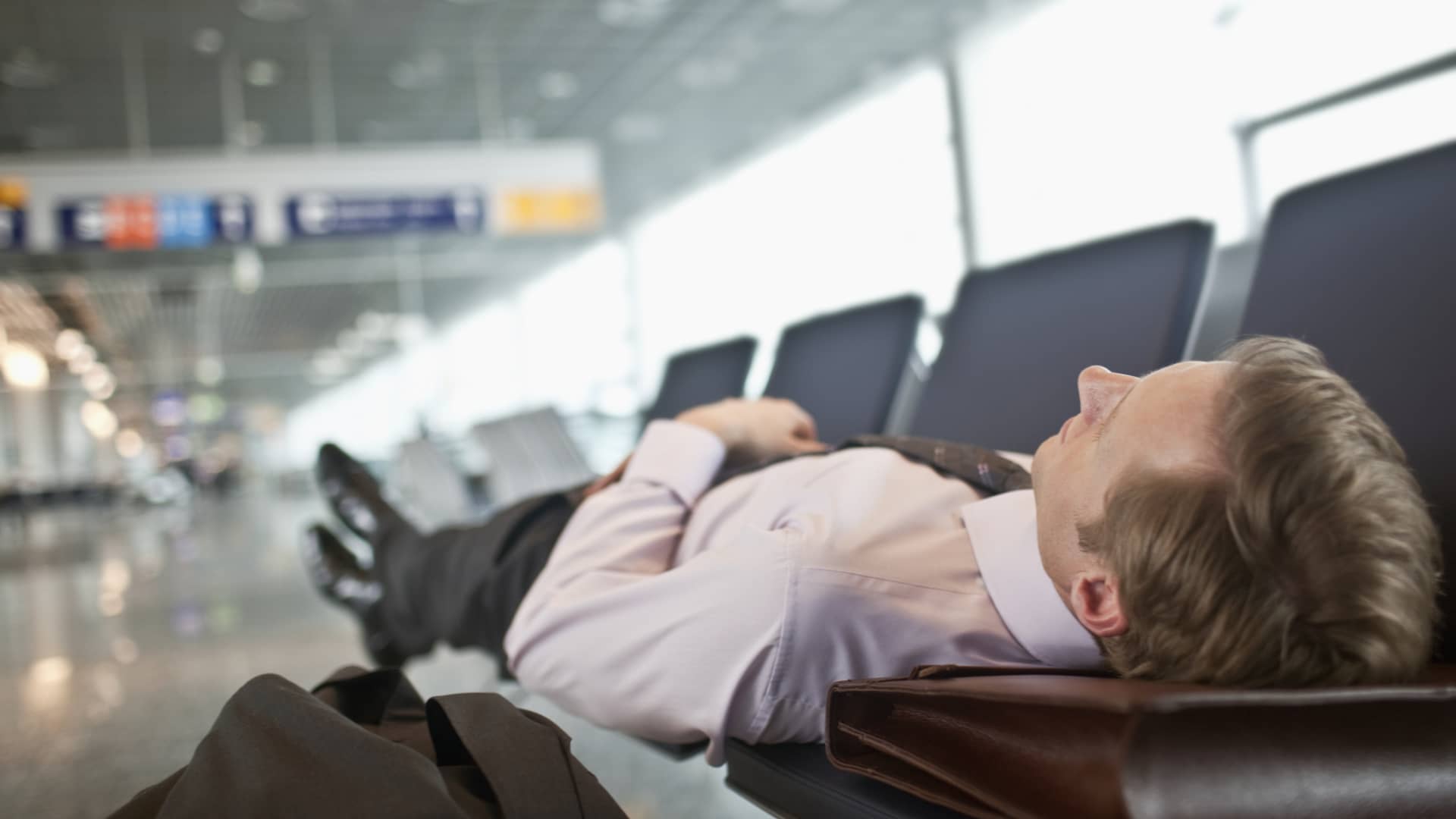Products You May Like
From popping melatonin to making fists with your toes, passengers have long employed strategies to combat the negative effects of air travel.
But airlines can play a role too, according to new research from Qantas and the University of Sydney’s Charles Perkins Centre.
The research is part of Qantas’ Project Sunrise program, which plans to link Sydney to New York City and London via non-stop flights in 2025.
Qantas says that while it has the capability to fly the 20-hour flights, it’s studying ways — from lighting schedules to eating spicy foods — to make the journey less arduous for passengers and crew.
The research
According to preliminary results released in mid-June, researchers used volunteer passengers on three test flights to analyze ways to reduce jet lag, including:
- Adjusting cabin lighting and mealtime schedules
- Providing special food and beverage menus that included chili, chocolate and ingredients known to produce sleep-inducing tryptophan
- Performing onboard stretches and exercises
Volunteers were monitored using wearable tech devices during the flight, and their reaction times were measured through online tests, according to the press release. They also kept a daily health log before, during and for two weeks after test flights, it said.
The report concluded that, compared with other passengers, the volunteers “experienced less severe jet lag (self-reported), better sleep quality inflight [and] better cognitive performance in the two days after flight.”
“Light exposure is critical for reducing jetlag,” said Svetlana Postnova, who studies sleep-wake cycles and circadian rhythms at the University of Sydney’s Charles Perkins Centre.
The flight departed New York City at 9 p.m., and the researchers kept the lights on for an additional six hours, she told CNBC.
Lights were turned off around 3 a.m. Eastern Standard Time, and the cabin stayed dark for 11 hours, before being turned back on for the final two hours of the flight, she said.
That was done “to nudge the body clocks towards the destination time zone,” she said.
Serving lunch at night
Meals were aligned with the lighting, said Postnova, noting they were served after takeoff, before the lights were turned off and before arriving.
But the initial meal wasn’t dinner — it was lunch, said Qantas Group CEO Alan Joyce.
“Night flights usually start with dinner and then lights off. For this flight, we started with lunch and kept the lights on for the first six hours, to match the time of day at our destination. It means you start reducing the jetlag straight away,” he said in a statement after the first test flight was conducted.
Studies on the brightness and color tone of cabin lighting are planned for later this year, and more research on departure and arrival times and seasonal differences is needed, according to Qantas and the University of Sydney.
Findings from the test flights have not been published, but Peter Cistulli, professor of sleep medicine at the University of Sydney, called the early results “promising.”
For now, Postnova said, travelers shouldn’t wait until they land to combat jet lag — rather, they should start the process as soon as their flight departs.
An onboard ‘wellbeing zone’
The jet lag research is being conducted while Qantas awaits 12 Airbus 350 aircraft it ordered in May 2022. Delivery is expected to begin in late 2025, with the New York-Sydney route starting shortly thereafter, according to the press release.
Joyce said the new non-stop flights will reduce travel times between New York and London to Sydney by some three hours.
The new Airbus fleet will also have an onboard “Wellbeing Zone” where passengers can stretch and perform simple exercises.
“Our A350s will have about 100 fewer seats than most of our competitors, which gives us room for more space in all classes as well as a Wellbeing Zone for Premium Economy and Economy passengers to stretch,” Joyce said.
As for what passengers do on the flights, which will likely be the longest commercial flights in the world, Joyce said: “People can choose how they spend their time but we’ll make recommendations based on science.”
